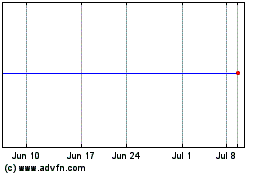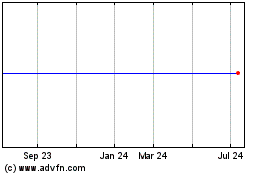By Joe Flint
The NFL has been sacked for a loss.
Once considered immune to the audience erosion plaguing the
television industry, ratings for the National Football League have
slipped through the first four weeks of the season.
TV networks have spent heavily on sports, and the NFL in
particular, because of their must-see nature. While more viewers
today watch commercial-free streaming services like Netflix or
record shows on DVRs and skip the ads, sports programming primarily
is still watched live, making it valuable to advertisers.
Combined, ESPN, Fox, NBC and CBS are spending an average of $5
billion a year for football rights through 2021. The games not only
score big ratings and ad sales, but are crucial platforms to
promote other programming.
This season, network viewership is down about 10% from last
season, according to Nielsen data, with steeper declines for
prime-time games on Sunday, Monday and Thursday. The drop has
caught advertisers and rights holders off guard and left them
scrambling to find a cause.
"We're scratching our heads," said Andy Donchin, a media buyer
at Amplifi US, an ad-buying unit of Dentsu Aegis Network, whose
clients include General Motors Co. "We cannot pinpoint any specific
reason why the numbers are down. It is probably being caused by a
confluence of events."
One reason often cited is the election. The Sept. 26 debate
between Hillary Clinton and Donald Trump drew 84 million viewers,
cutting into ESPN's "Monday Night Football." While this Sunday's
New York Giants versus Green Bay Packers matchup on NBC will
probably fare better, its ratings likely will be impacted by the
head-to-head competition with the second presidential debate.
Rating declines for Sunday afternoon aren't nearly as steep as
the prime-time telecasts, but Fox and CBS are down, while cable
news ratings are up.
"The election is probably the biggest factor that you could
point to," said Fox Sports President Eric Shanks.
CBS Chief Executive Leslie Moonves also cited the presidential
election, but added, "I don't think the sky is falling at all."
Mr. Trump and Mrs. Clinton can't take all the blame. Some star
players have been missing this season, including the New England
Patriots' Tom Brady, who returns this Sunday after a four-game
suspension. Dallas Cowboys' Tony Romo and Minnesota Vikings running
back Adrian Peterson are sidelined with injuries, and Peyton
Manning retired.
"We're missing some stars out there," said Brian Rolapp, the
NFL's head of media, who noted the NFL has gotten off to slow
starts before "and [has] done just fine."
The issue is whether this slide is a short-term blip or start of
a long-term decline that would raise questions about the big bets
networks have placed on football.
"If the trend continues, it is a concern," said Jefferies &
Co. analyst John Janedis. To be sure, the NFL is still consistently
delivering the biggest audience in television and is coming off one
of its best seasons.
Still, more people are cutting cable, and NFL games are
available on more venues -- like Verizon mobile phones and Twitter
-- that could be taking some viewers away from traditional
networks. With the NFL expanding its content to such outlets,
consumers can access games on their tablets, computers or phones.
Nielsen doesn't yet track all of these new platforms. By next
season, Nielsen's highly-anticipated Total Audience Measurement
service is expected to be in place and better track changing viewer
habits.
Walt Disney Co.'s ESPN has experienced the biggest drop, down
17% to an average 11.3 million viewers. Excluding the game up
against the debate, ESPN is off 11%. Comcast Corp.'s NBC Sunday
night franchise is averaging 22 million viewers, down 13% from last
season. CBS is off 15% on Thursdays. On Sunday afternoons, CBS and
21st Century Fox's Fox Broadcasting are both down 3% in
viewers.
The prime time franchises also have been stung by lackluster
matchups, leading viewers to tune out early.
How the NFL handles injuries, the off-field antics of some
players, constant delays of games due to replays and officiating
challenges are sometimes cited as reasons for the lower numbers.
Some fans also are angry at players for refusing to stand during
the national anthem to protest police brutality and at the league
for not banning such on-field protests. Mr. Janedis said all these
may be contributing to a "more negative view of the NFL in
general."
"In all honesty, we don't see any evidence of that," the NFL's
Mr. Rolapp said. "We've been in the news in other ways before and
haven't seen a material impact on ratings."
Of particular concern is the decline among younger male viewers.
ESPN, for instance, is down 24% among men aged 18 to 34 years
old.
"If kids don't start coming back in, you're going to have an
issue," said Lee Berke, a sports media consultant. The rise in
popularity of videogames and so-called e-sports is seen as a factor
in young men watching less professional football.
With no shortage of sports on television, some experts think
over-saturation also could be an issue. NFL games are now on TV
three days a week with "Thursday Night Football" expanding to more
games and an additional network this year.
The NFL decline isn't unique. NBC's Summer Olympics coverage
fell 15% from the 2012 London games and national ratings for
baseball playoffs and World Series have been declining for many
years.
Not all sports broadcasts are on a downward trend. NBA ratings
were up for the regular season and the finals, as was the NHL.
While the NFL is enduring a tough fall, college football ratings
have remained strong thanks to several nail-biter finishes and a
format that makes every game life or death.
Like a quarterback used to making dramatic fourth-quarter
comebacks, the NFL isn't panicking. "There are bumps along the
road, but it's not like we haven't been here before," Mr. Rolapp
said.
Write to Joe Flint at joe.flint@wsj.com
(END) Dow Jones Newswires
October 06, 2016 17:48 ET (21:48 GMT)
Copyright (c) 2016 Dow Jones & Company, Inc.
CBS (NYSE:CBS)
Historical Stock Chart
From Mar 2024 to Apr 2024

CBS (NYSE:CBS)
Historical Stock Chart
From Apr 2023 to Apr 2024
